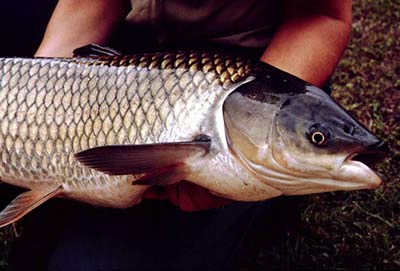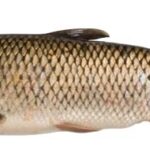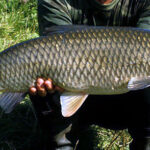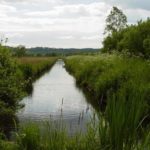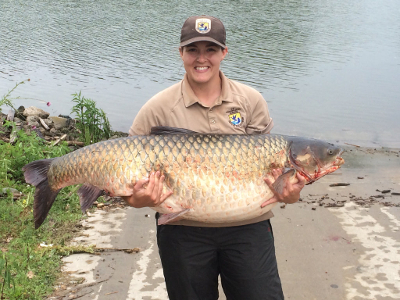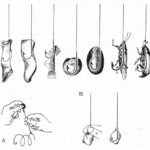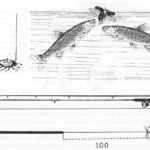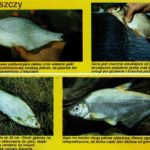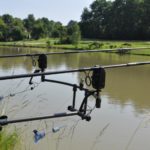Efekty zaaklimatyzowania się u nas amura, wywodzącego się z grupy roślinożernych ryb wschodnioazjatyckich, trzeba oceniać jako zdecydowanie pozytywne. Ryba ta stała się nieocenionym sprzymierzeńcem w utrzymywaniu akwenów w należytym stanie, przyczynia się do znacznego podwyższenia wydajności stawów rybnych, no i jest ulubieńcem wędkarzy. Nie tylko jako urozmaicenie wędkowania – pociąga przede wszystkim wizja kolosalnych okazów. To był naprawdę świetny pomysł, żeby sprowadzić do nas amura!
Ta, na pierwszy rzut oka zwyczajna, karpiowata ryba podobna jest do klenia jak „rodzony brat”. Różni się od niego ukształtowaniem głowy o szerokim i długim płaskim czole, bardzo nisko osadzonych oczach oraz dolnym położeniu otworu gębowego. Charakterystyczny jest też masywniejszy niż u klenia trzon ogonowy. Jama brzuszna wyścielona jest czarną wyściółką. Ubarwienie amura jest w zasadzie takie jak u klenia, jedynie płetwy są mniej kolorowe.
W swoim naturalnym środowisku – w dorzeczu Amuru i w wielkich wschodnioazjatyckich rzekach – jest w zasadzie gatunkiem reofilnym. Zadomowił się w rzekach, wyrobiskach pożwirowych, we wszystkich typach zbiorników wodnych, w szerszych kanałach melioracyjnych o głębokości co najmniej 0,5-0,7 m, i wszędzie tam, gdzie może się sprawdzić jako niezastąpiony biologiczny likwidator nadmiaru wodnej roślinności. Mówiąc krótko – lubi przestrzeń z dużą ilością wodnych roślin. W praktyce można liczyć na to, że w każdym typie wód odpowiednich dla karpia sprawdzi się także amur; ich kombinację można nawet polecać, stosunki między tymi rybami układają się bowiem wyjątkowo harmonijnie, nawet w pewnym sensie wprost symbiotycznie: amur bezinteresownie pomaga karpiowi w ten sposób, że oczyszcza przestrzeń wodną z nadmiaru roślin, a co więcej – przyczynia się do rozwoju naturalnego pokarmu przez intensywne nawożenie. Za to wszystko nie wymaga wiele – wystarczy mu, że od czasu do czasu skosztuje pokarm przeznaczony dla karpia.
Amura można scharakteryzować jako rybę, podobnie jak karp, ciepłolubną. Liczne obserwacje wskazują, że jest jednak skłonny do kompromisów. Okazało się, że w zimie co prawda przemieszcza się do głębszych warstw, ale nie oddaje się typowej zimowej drzemce; niekiedy przyjmuje pokarm nawet przy bardzo niskiej temperaturze wody (5-6 °C).
Dzięki jego azjatyckiej naturze, w której dominuje skromność i zdolność przystosowywania się, można liczyć na jego adaptację także w surowszych warunkach klimatycznych, z tym, że ceną może się okazać niezdolność do rozrodu.
W młodości żywi się, tak jak inne ryby, najdrobniejszym planktonem i w ogóle drobnym pokarmem zwierzęcym, po osiągnięciu wagi 0,2—0,3 kg zaczyna odżywiać się pokarmem roślinnym, a osobniki dorosłe są wyłącznie roślinożerne. O ile ma możliwość wyboru, woli miękkie rośliny wodne, a jego sposób żywienia można określić jako selektywny. W potrzebie zadowala się młodymi częściami twardych wodnych i przybrzeżnych roślin, a w ostateczności odżywia się nawet grubszymi źdźbłami traw. Przy optymalnej temperaturze -dla amura: 20-28 °C – potrafi skonsumować dziennie ilość roślin odpowiadającą jego wadze. Dzięki temu rośnie stosunkowo szybko, osiągając w 1. roku życia (w naszych stawach) 10-25 g, w 2. roku 300-500 g, w3. roku nawet 1 kg.
Przyrost roczny dorosłych amurów w zależności od typu wody waha się od 1 do 2 czy nawet 3 kg, maksymalna waga w słowackich wodach 15-20 kg, wtedy osiągają ponad 1 m długości (w warunkach wschodnioazjatyckich zdarzają się okazy o wadze ponad 30 kg).
Skoro mowa o zdolnościach adaptacyjnych amura pamiętać należy też o drugiej stronie medalu – ryby te chętnie przyzwyczajają się do lepszego pokarmu i łatwo można je rozkaprysić. W wodach, gdzie ryby się podkarmia (dotyczy to także zanęcania) z chęcią przyjmuje zaproszenie do bogato zastawionego stołu, bez względu na to czy podaje się potrawy pochodzenia zwierzęcego (dżdżownice, larwy, fileciki z ryb) czy roślinnego (kukurydza, śruta, chleb, ziarna, ciasta).
Na plus trzeba mu zapisać także i to, że nie reaguje na wahania temperatury, fazy księżyca, kierunek wiatru i podobne czynniki. To oczywiście zwiększa jego wartość dla wędkarstwa. Trzeba jeszcze podkreślić jego aktywność żerową we wczesnych godzinach wieczornych, a także w godzinach nocnych. Nasze warunki nie sprzyjają naturalnemu rozmnażaniu amura, co wyklucza ewentualne ryzyko jego niepożądanej ekspansji.
Pytanie, gdzie w naszych wodach można szukać amura wydaje się przedwczesne. Powszechny niedostatek jego odpowiedniego narybku (sztuki o masie średnio 0,5 kg) każe przy zarybianiu dawać pierwszeństwo celowi biomelioracyjnemu; potrzeby wędkarzy muszą być traktowane jako drugorzędne. Mimo wszystkich peanów na cześć amura nie należy tracić rozwagi i przy zarybianiu dokładnie trzeba rozważyć sytuację, by nie utracić nad nim kontroli. Można przewidywać (a potwierdzają to wyniki połowów) jego obecność praktycznie w większości naszych większych zbiorników wodnych.
Ważne jest, że amura możemy już uważać za rodzimą rybę i musimy się uczyć najskuteczniejszych metod jego połowu.
